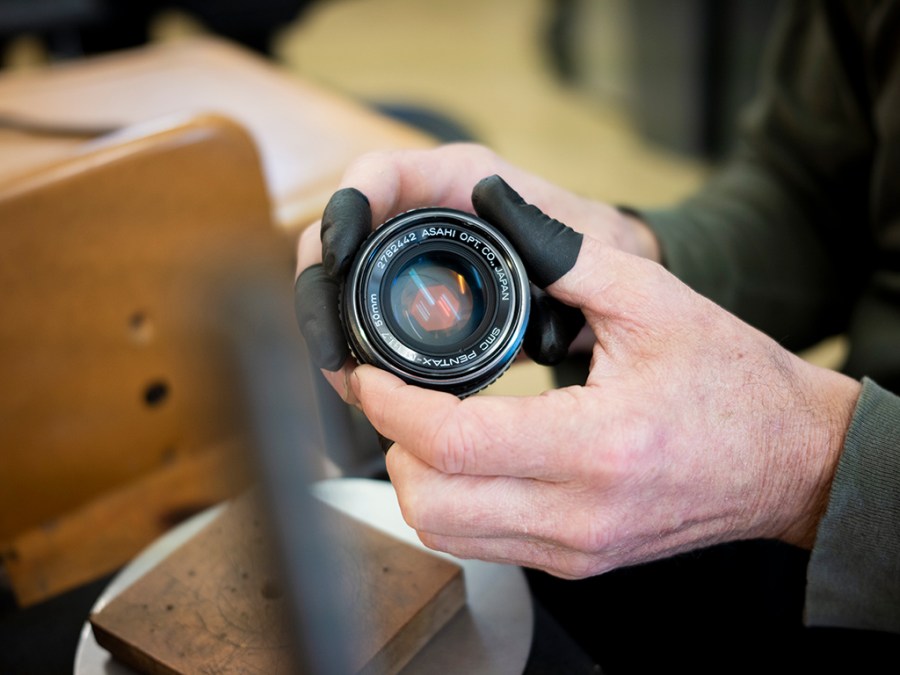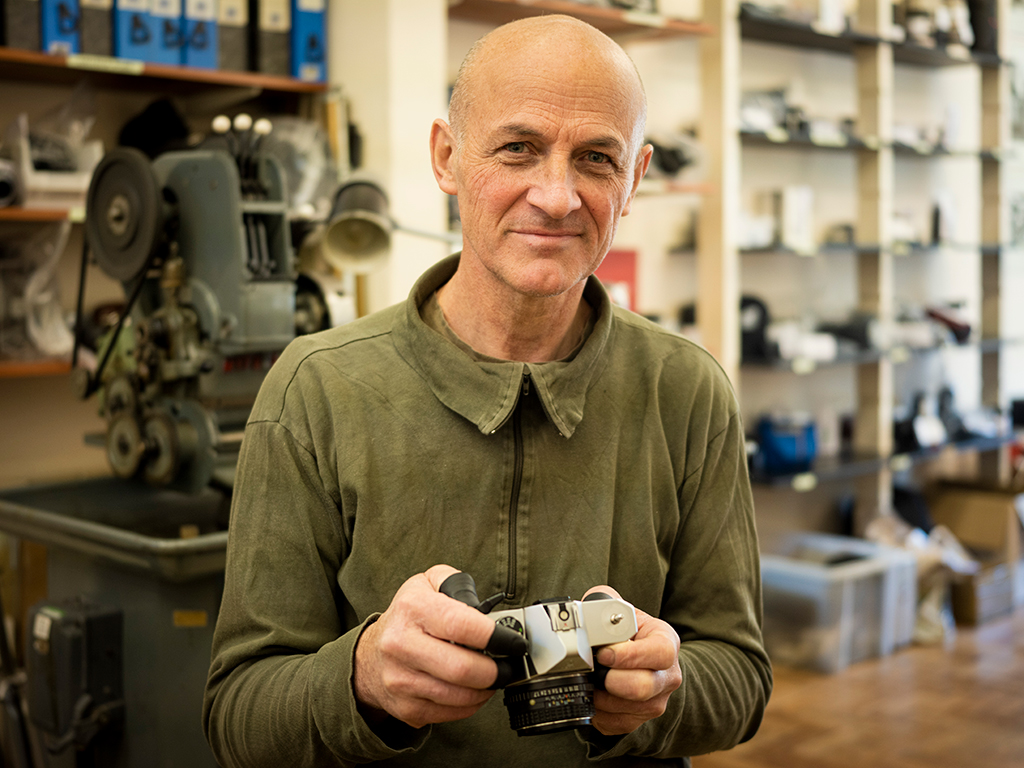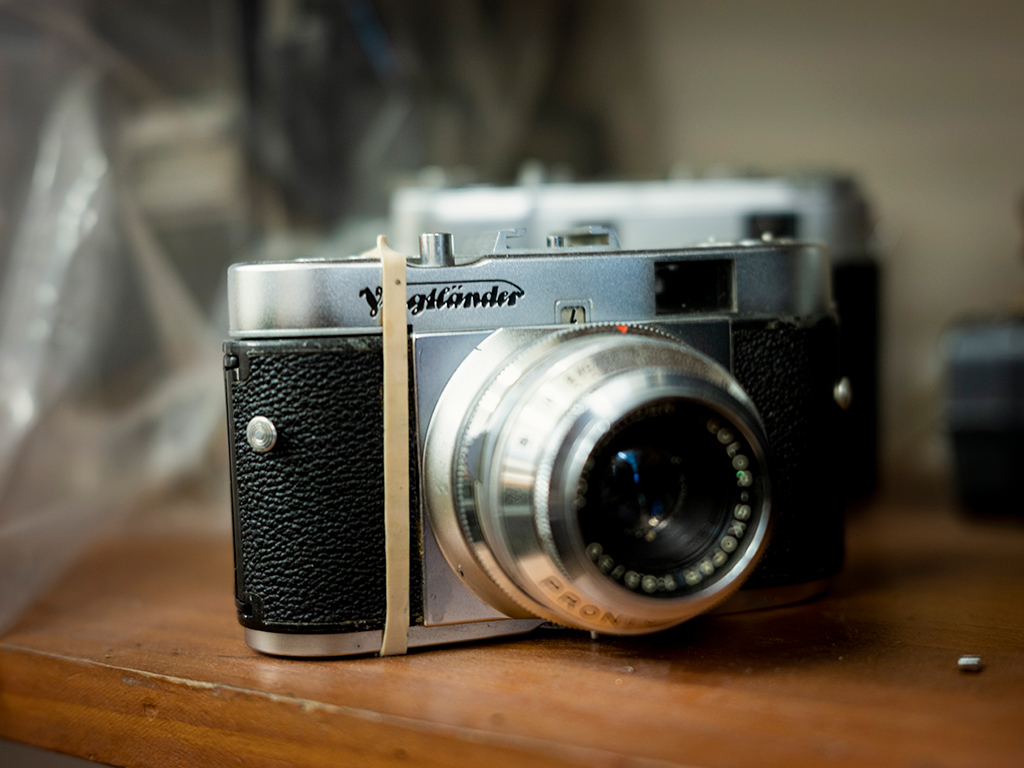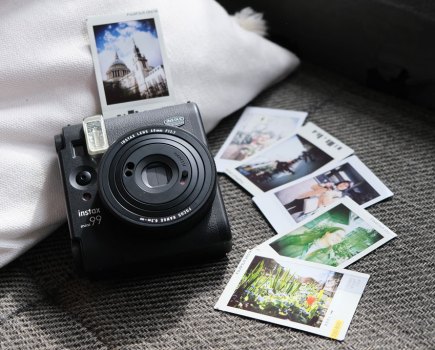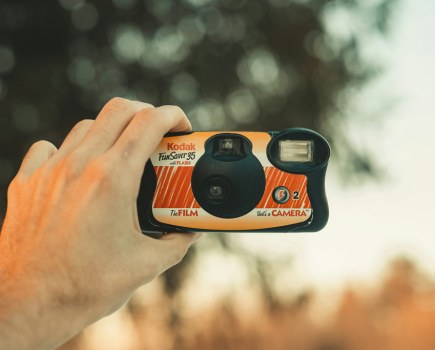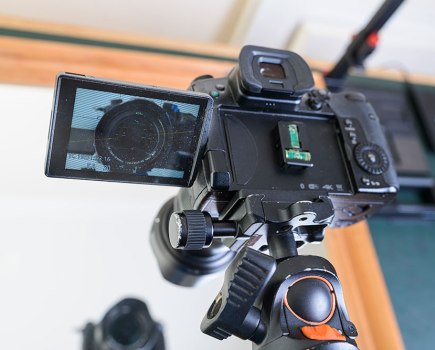Benedict Brain meets John Quantick, the Mr Fixit of film cameras, to learn about the art and craft of maintaining your analogue equipment
Entering Black on White, a camera repair shop in Bristol, is like stepping into an Aladdin’s cave of photography gadgets. A photographic paradise. Shelves are stacked with old film cameras in various states of repair and devices for measuring this and adjusting that. The owner and camera wizard, John Quantick, has been at the store, located in one of the now-trendy city’s smartest neighbourhoods, fixing cameras for over 30 years.
His primary focus is repairing and restoring film rather than digital cameras, although he does work on digital cameras too. As you’d expect, his business saw some dips as digital photography took hold, however, in recent years he’s become increasingly busy, especially with younger people coming through his doors eager to experience the ‘real’ process of making images.
Older punters are re-emerging too, hankering back to the good old days of film. I’m here to get some tips on how to maintain and look after a film camera, what to look out for when purchasing a second-hand camera and to learn more about John’s process in establishing the condition of the camera and how he goes about the repair process.
When a camera comes in John needs to first establish what condition it’s in and has a few basic principles to follow. First is the shutter. ‘I mainly want to know if the shutter works,’ explains John. ‘I want to know what blinds are firing and establish what the shutter speeds are doing. I have a machine – a shutter speed tester – that tells me exactly what the blinds are doing and whether the shutter speeds are accurate.

Everyday maintenance of your film camera is crucial, but bigger jobs are best handled by a pro like John
The shutter is often out which is usually down to lubrication, or lack of it. As a camera gets old the lubricant dries out and the blinds drift, affecting the accuracy of the speeds. Once I’ve got access to the blind mechanism I can lubricate properly and then tweak the blinds and the speeds to get them right. It’s mainly just age and there’s not much that you can do to prevent it other than having it serviced regularly. Cloth blinds are the worst for drifting speeds because they stretch.’
The whole process of a function test is about eliminating the unknowns and the next step for John is to establish whether the lens mount is square and aligned to the film plane, which can cause problems with focus. ‘More often than not this is off on old film cameras,’ reveals John, who adds, ‘It’s probably because the camera has been dropped or it’s been swinging about with big lenses attached.
I use a dial gauge indicator to establish whether it’s off and if it is I can shim it square easily. We’re just talking about microns in alignment but even these very small amounts can manifest themselves with some parts of the image appearing strangely soft. On the older cameras, the front alignment is nearly always out.’ Using a lightbox John will also establish the accuracy of the camera’s light meter if there is one in the camera.
Finally, John checks out the lens. ‘I use a collimator,’ explains John as he looks down the barrel of the device. ‘I’m looking to see if the lens is focused or if it’s the body that’s off and then work out the net between the two. I’m just trying to establish if a sharp image is being formed on the film plane and asking myself if things are in focus or not.
If there’s still a problem and I know the image on the film plane is good I can deduce that the fault might be with the range finder. I’ll check the range finder; this is a separate reflex system with the mirror and the screen and in time things do drift out here too. It’s about eliminating and isolating problems.’
Visit www.bonwcameras.co.uk
Second-hand pitfalls to avoid
John is very wary of buying used equipment online without the opportunity to see it first. ‘It’s 50-50… it’s a danger zone, you just don’t know the condition of what you’re looking at; a lot of the problems are hidden so it’s really hit and miss.’ Looking around second-hand and charity shops along with flea markets and car boot sales is a much better idea.
John tells me that the first thing to look at is the shutter. ‘A simple audio test at a shutter speed of something like one second, should give you a sense of whether the shutter feels alright, the same goes for the “feel” of the winding mechanism,’ explains John. Naturally, visual inspection is vital too. ‘Look through the viewfinder and see what it looks like at infinity as everything is set back from infinity,’ says John.
‘Also, look for mould and corrosion especially in the battery box. Batteries left in cameras over a long period of time will leak and the seeping acid can degrade a lot to the wiring, deep into the camera, causing all sorts of problems.’ Thankfully most old film cameras are predominantly mechanical so complex electrical systems and so on are less of a problem. Finally, a full function test, to establish the parameters mentioned in this feature, will give you the peace of mind that the lens alignment, the shutter speeds, and light meters are all working, and will set you back £30.
John’s top tips to maintain your film camera
Keep dry

Dry your camera properly in an open dry area. Do not leave in your camera bag especially if it’s been wet and or cold. Fungus really kicks off in dark and airless conditions such as a bag, and dampness from the condensation feeds the spores. By leaving your camera in the bag you’re essentially creating the perfect fungus-growing conditions.
Brush off
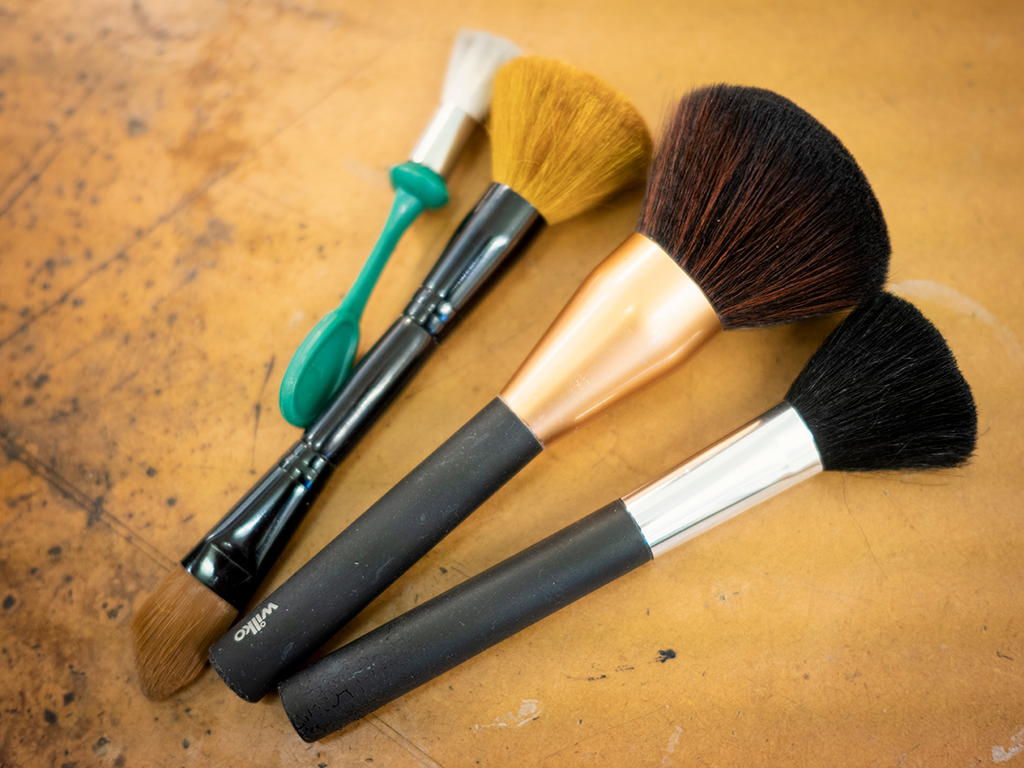
Use a make-up brush such as a soft blush brush to gently remove heavy dust and sand so it doesn’t scratch the lens. A blower brush can be useful for this too. Don’t be tempted to blow with your mouth as spit can easily end up on the camera or lens, causing damage. Make-up brushes are widely available and don’t cost much.
Strap up
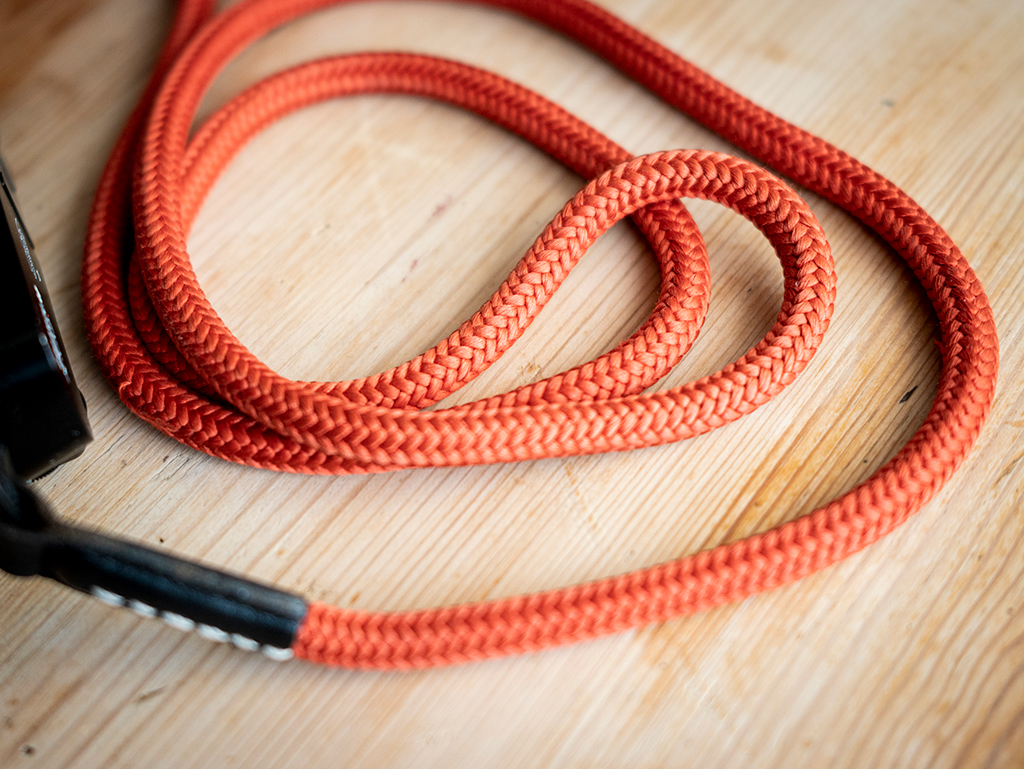
Sounds obvious, but one of the best ways to look after and maintain your film camera is to use a camera strap to prevent you from accidentally dropping it. If you’re going for the ‘hipster film shooter vibe’ there are plenty of cool rope ones to choose from, and again many are reasonably priced. A decent padded bag is critical too.
Filter tips
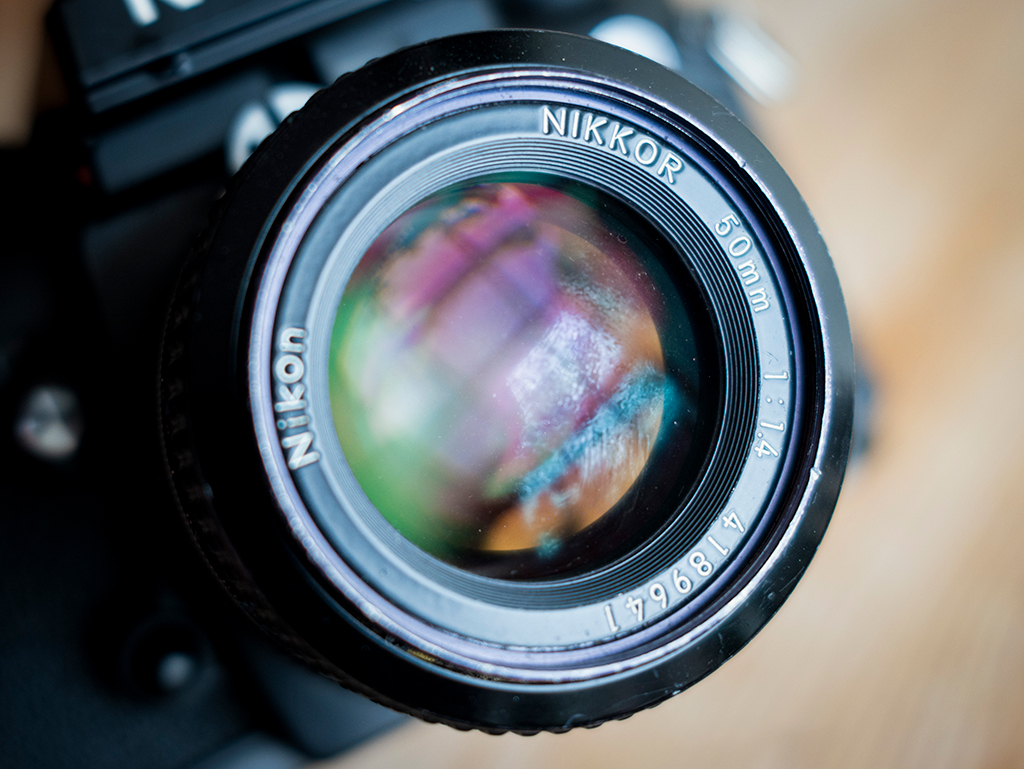
John suggests the best way to protect the front of the lens is to use a simple UV filter. Keep the back lens cap on (well, both really) so dust doesn’t accumulate and fall into the camera (especially true for digital cameras with sensors). Try to change lenses in the field as little as possible; and if you must, find a sheltered area out of the wind.
Storage sagacity
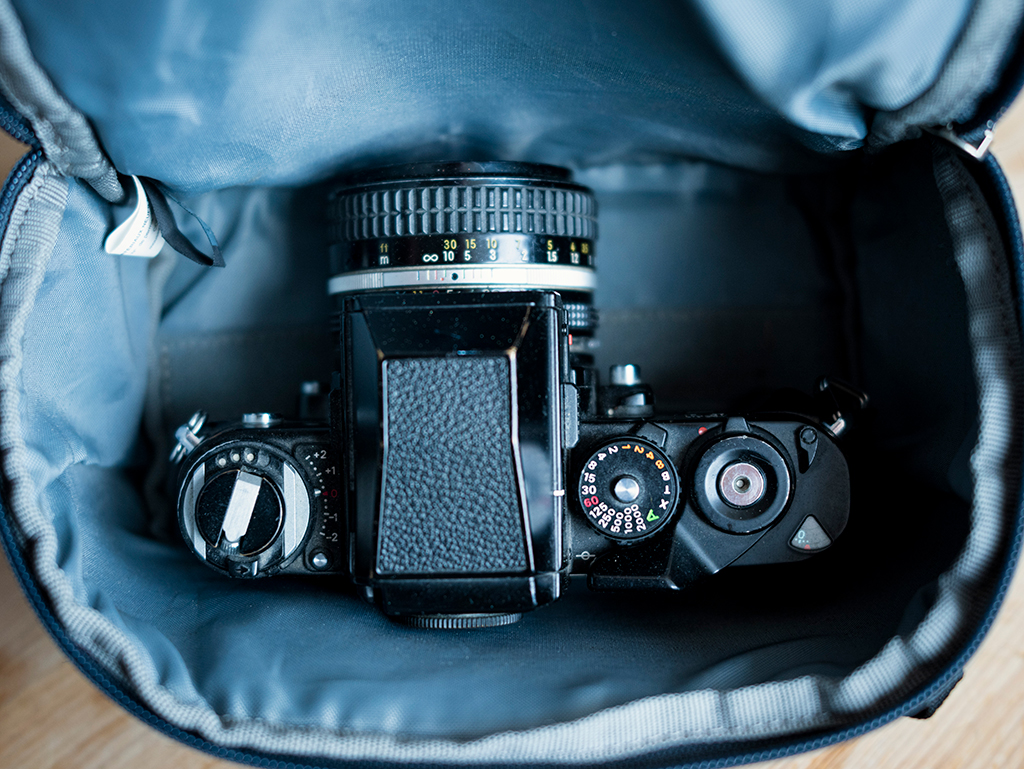
If you’re not using your film camera for a long time, take the batteries out to avoid corrosion issues if the acid should start seeping. Leave the shutter in the fired position to take the stress off the shutter. Finally, disconnect the lens and use body and lens caps to store; this is also good practice on long journeys to take the stress off the lens mount.
John Quantick
John Quantick started repairing cameras at 18. He spent a few years in London learning medium format before returning to Bristol in the 1980s where he worked at Pelling and Cross for about 4 years working on professional gear. In 1987 John started his camera repair shop Black on White and it’s still going strong today. See www.bonwcameras.co.uk.
Further reading

